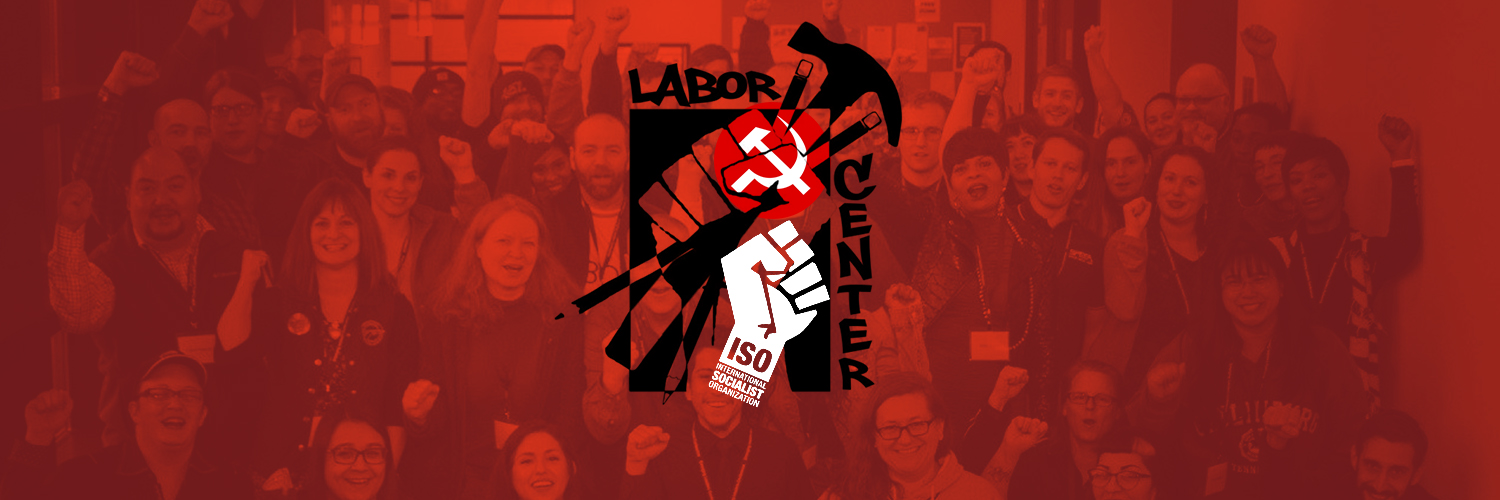With news that the U.S. Supreme Court will hear Janus vs. AFSCME and the widely held belief that Mark Janus will win, ultimately bringing right-to-work (RTW) to public employees all across the country, we can anticipate Big Labor will not just give in and allow people to walk away from paying dues.
You can bet government union leaders are organizing all across the country to concoct new scams that will allow them to continue to treat public employees as a cash cow for their ideological fantasies and political realities.
In fact, I recently attended a conference put on by the Labor Education and Research Center (LERC), a small, taxpayer-subsidized outfit headquartered at South Seattle College.
The title of the conference was “Emerging Leaders Conference 2017 – Social Justice Unionism in the Face of RTW.
Saturday morning started out with a radical left-wing panel discussion about the history of racism in the labor movement. The featured speakers were:
- Bill Fletcher, internationally known labor activist and leading U.S. Marxist;
- Jesse Hagopian, history teacher at Garfield High School and member of the International Socialist Organization;
- Ligaya Domingo, education director, SEIU 1199NW, and daughter of Silme Domingo and Terri Mast, activists with ties to the Communist Party; and,
- Kent Wong, director of the UCLA Labor Center & Vice President of the California Federation of Teachers, previously a member of the Communist Workers Party.
This topic was the first of what turned out to be a day of contradictions.
There was a brief discussion about racism during the beginning of the labor movement. In the early 1900’s more than 40 labor organizations had no black members, and more than 25 had policies against blacks from becoming apprentices.
To my surprise, much like a talented magician at a magic show, a subtle transition took place in the speaker’s story and suddenly a picture was painted that RTW equals racism.
Before long it became clear the labor movement’s goal is to bring people together by dividing them into two groups, those who support compulsory labor unions and racists.
Some of the speakers talked about the “rising trend in the labor movement” to bring social justice front and center, while others spoke about the “green movement,” climate change, immigration and immigrants’ rights.
When the question of Donald Trump’s presidency and his success with support in the labor movement came up, the speakers agreed that there is a real divide in the labor movement with their more conservative members.
Apparently, the more conservative labor leaders believe the labor movement would be more unified and stronger if it were to maintain a narrower focus, concentrating on workplace conditions, wages for said union members, benefits, and workplace matters the “bread and butter issues.” The AFL-CIO agrees with Trump that NAFTA is a disaster that is hurting U.S. laborers.
Meanwhile, the consensus at this event was that labor unions would be stronger if they focused on social justice issues and increasing wages for nonunion members, like the “$15 now” campaign.
The need for unity was often expressed as was the assertion that the 1 percent and management is trying to “divide and conquer us.” It is worth noting that there were no specifics given in how a strategy of divide and concur was being waged by anyone other than the people sitting in front of me.
What is one of the solutions to overcome this alleged strategy of division, you might ask?
“We need to take over the secretary of the state in every state. Labor unions need to find candidates to run in every state. We need to control the voting process in every state; we need ‘democracy brigades’ to go to the polls and defend democracy. That’s all I am going to say about that.” Bill Fletcher
Fletcher came off as very sincere and honest when he said, “This is not a moral issue, it is a question of do you want to win?”
Shortly before the first breakout session, “Winning Issues Campaigns in the Workplace“ led by Sarah Laslett, from the Oregon Labor Education & Research Center, Sarah approached me in the hall to introduce herself and ask if I was going to be in her class.
There was apparently concerns spurred by union fear propaganda about the Freedom Foundation. Unfounded, insanely paranoid fear-mongering that is the messaging used by union leaders to scare their members.
When the class began, Sarah started off by calling for a vote and an agreement that no one could record the work session. I had a strong feeling this was targeted at me, as were her following comments referencing the ground rules that were agreed upon the previous night, for example, no name calling, etc.
After a little additional conversation about allowing different viewpoints, Sarah thought it would be a good idea if we all got to know each other a bit better. She began to ask innocuous questions, for example, “Please stand if you are under 40,” and “Please stand if you are part of a union.”
When I did not stand indicating I was part of a union, Sarah thought it would be good for me to introduce myself and the organization I was representing. I happily complied.
A few minutes later a woman sitting right behind me raised her hand to tell the class that she did not feel safe to speak openly due to the fact that I was in the room. She acknowledged my right to be there, then while sobbing she cried out she did not know what to do.
I picked up my coat and quietly stated that I would leave. I went to another breakout group. I did, however, have someone come up to me to apologize for what happened. They did not think it was right that I had to miss the class.
After some conversation in the hall with intrigued parties, I found myself invited to sit in on a workshop being taught by Marxist Bill Fletcher, who spoke about “Fighting Against Right-Wing Populism and Winning.”
I learned from Bill that “Holocaust denial is prevalent on the right wing.” This alleged fact intrigued me, as I have been involved with and known many people on the “right-wing” and I don’t think I have ever heard anyone deny the Holocaust.
My next class was “Demonstrating Value in a Right-to-Work World.”
One speaker talked about Janus and the fact that it was imperative that all employees work together to be strong and maintain the benefits of unionism. They then acknowledged they represent a diverse membership and would need to broaden their appeal to get more people engaged and supportive of their union.
THE GREAT CONTRADICTION
The next speaker talked about the importance of elections, the need to spend money in politics and the importance of having the right people elected.
The elephant in the room was obvious: How do you broaden your appeal to people of different political and philosophical beliefs while continuing to engage in hyper-partisan political campaigning and emotionally charged issue campaigns?
It seemed clear to me that the leaders of the labor movement are extreme left-wing progressives who view the labor movement as the vehicle to all of their political and ideological ends.
These so-called leaders were devastated at the thought of the Supreme Court ruling on behalf of Mark Janus, creating public sector right-to-work in all 50 states. They can’t use labor unions as their political tool if they have to sell it to all of the workers.
I decided to eat dinner with the 100 emerging labor leaders before driving home. It turned out I was becoming something of a celebrity as my table filled up quickly.
At least three separate people commented or thanked me for getting up and leaving earlier that day. They were very impressed and happy with how I handled it.
It was made very clear they believed I was pure evil and was there to troll, disrupt and otherwise cause problems. Their minds were blown that none of their precautions or concerns were necessary.
We had a delightful conversation in which everyone was shocked at how much we had in common. They were dumbfounded to learn that I don’t oppose their First Amendment right to organize but instead only resist some of the finer points, for example forcing others to pay for it.
I was on my way to my car to leave when a security guard stopped me outside and asked if I would like to be escorted.
I declined, thinking it a little strange, but a nice courtesy as I assumed everyone was offered. At that point, the security guard approached me and reached out to shake my hand and thank me for being respectful and polite, and not causing any trouble.
Did they hire security because of me, or for me? I was told there was fear of being protested; they were sure that we were “up to something.” There was real concern about the Freedom Foundation’s participation.
They were right to be afraid of the Freedom Foundation, but for the wrong reasons. We have no interest in disrupting their meetings, intimidating or harassing anyone. We don’t need to see their secret playbook; we already know what their plan is. It’s not a secret.
What they have to fear is the Freedom Foundation educating workers about their right to stop funding the union’s hyper-partisan political agendas.










